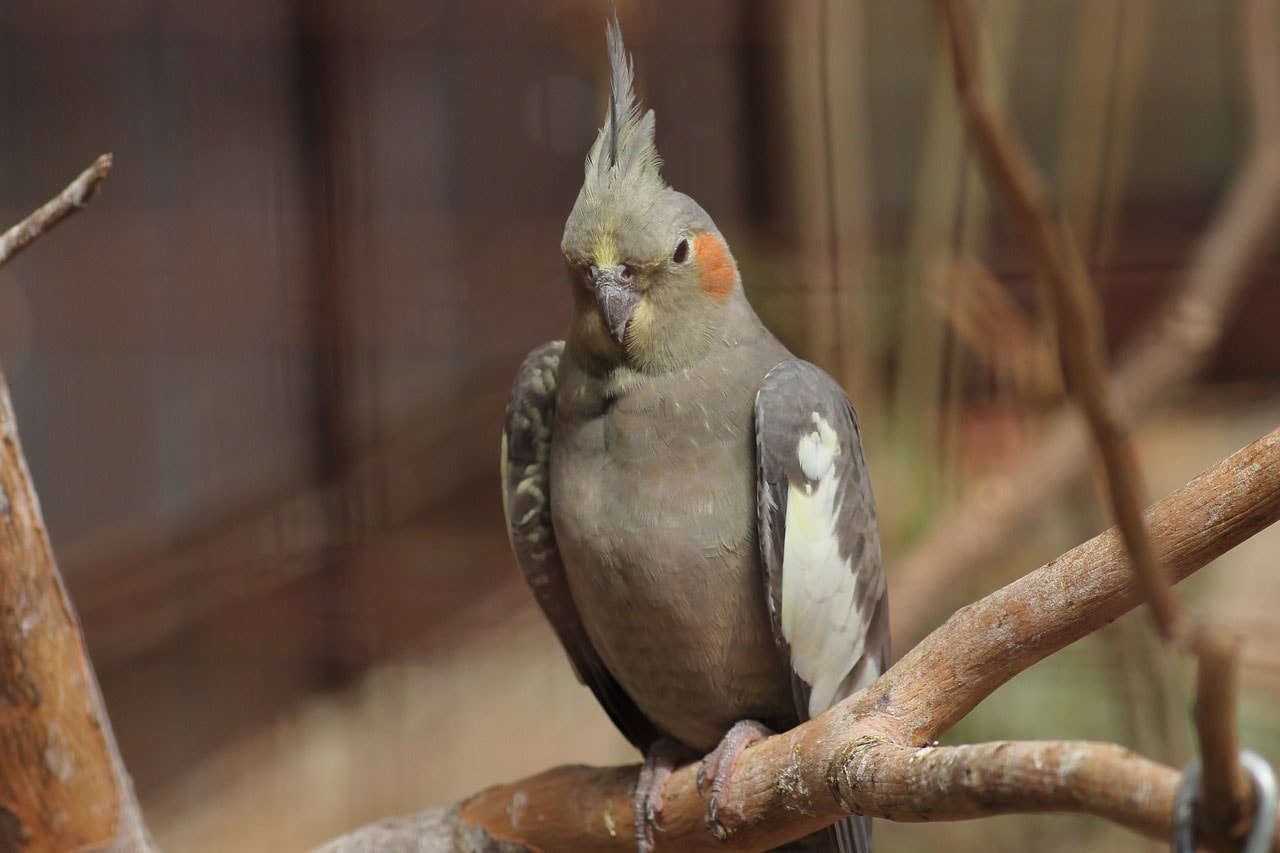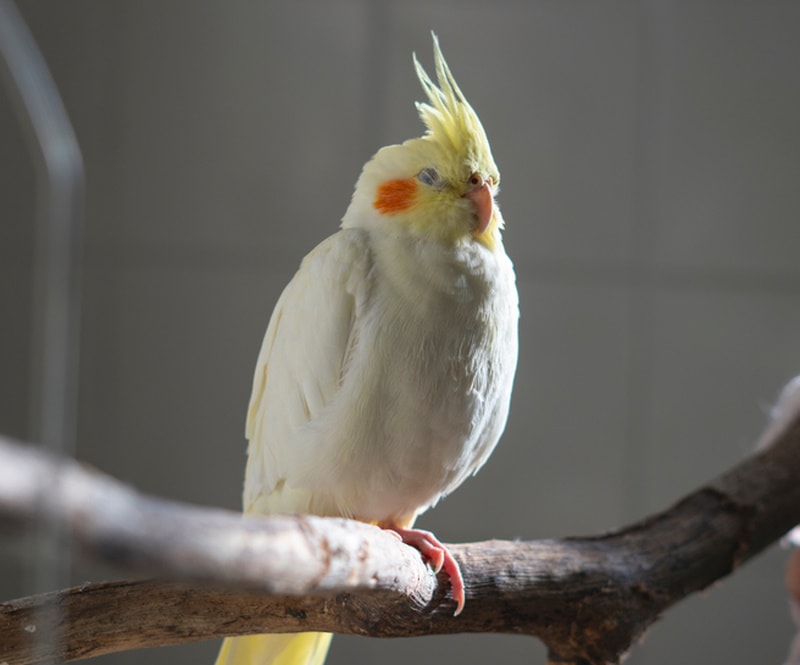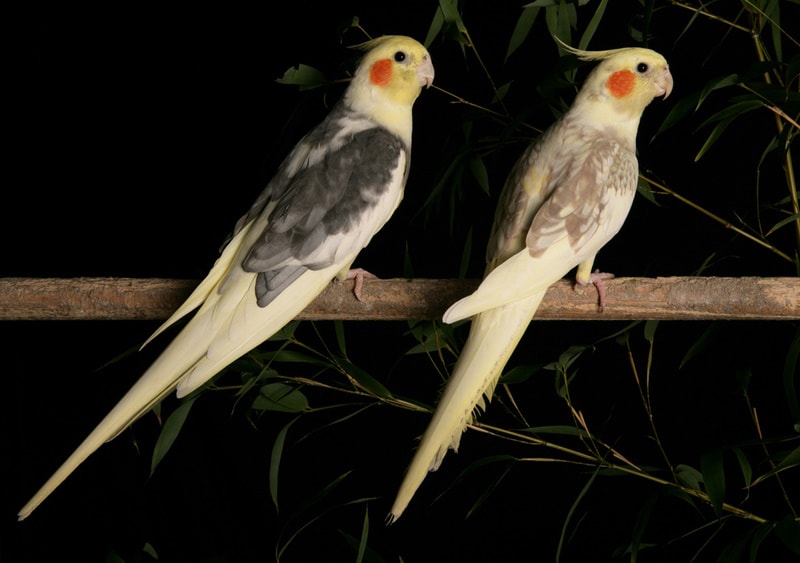What Cage Size for a Cockatiel Do I Need? Vet-Reviewed Requirements & Buying Tips
Updated on
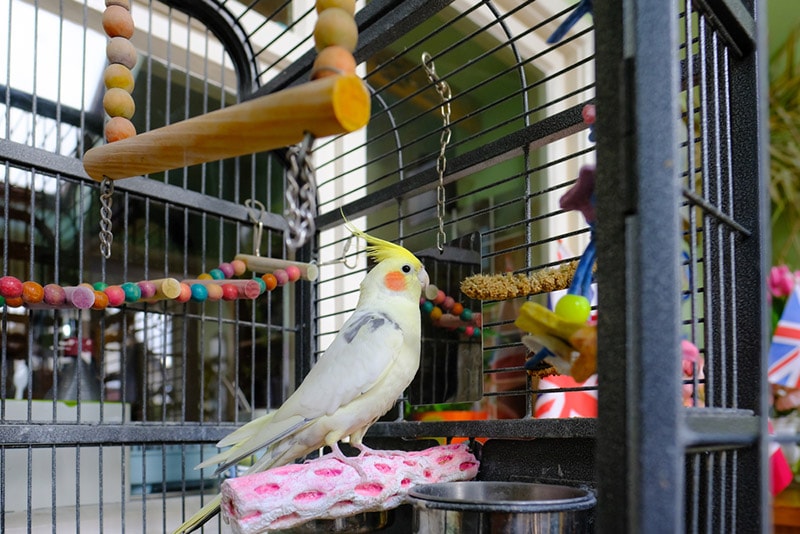
Cockatiels are one of the most popular types of pet birds among households in the world—and for good reason! They come in a variety of colors, they tend to be sociable, they are usually good with kids, and they are typically easier to care for than the average cat or dog. The most notable physical characteristic of the cockatiel is the bright orange circular marks on their cheeks.
Cockatiels in captivity are most comfortable and safe living in cages, which many of us lovingly refer to as their habitats. So, what size cage would your new cockatiel need to enjoy a happy and healthy life? In general, cockatiel cage should be at least 36 inches long, 24 inches wide, and 36 inches in height. This obviously changes depending on how many cockatiels do you plan to take care of. Read on!
Minimum Cage Size Requirements for a Single Cockatiel
There are no law requirements about how big a Cockatiel’s cage must be. However, there is a rule of thumb to follow to ensure health, happiness, and safety for your new pet as time goes on. A typical cockatiel is about 12 inches long when fully grown, and their cage should be at least three times longer than that, both in length and height. This means that your cockatiel’s cage should be at least 36 inches long, 24 inches wide (to ensure they can turn comfortably), and 36 inches tall.
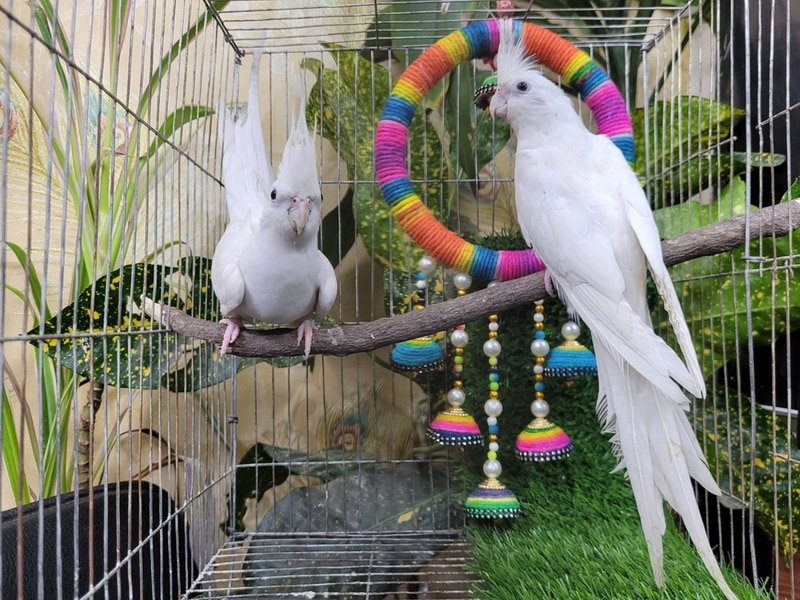
Minimum Cage Requirements for a Pair of Cockatiels
Cockatiels are monogamous creatures and would love to spend their days with a partner, so it’s always a good idea to keep a pair of cockatiels together in the same habitat. This will help to ensure that they don’t get lonely when human companions cannot be around to interact with them. A habitat meant to house a pair of Cockatiels should be at least 36 inches long, 24 inches wide, and 24 inches high.
The Bigger the Better!
While the minimum cage requirements should be enough for comfort and safety, bigger is always better. Cockatiels enjoy moving around a lot, so the more space they have to do so, the happier they will be. Your cockatiel’s cage can be as large as you want it to be. Some owners dedicate an entire wall in their home to an elaborate habitat for their pet birds to live in.
Cage Bar Spacing Guidelines
It is important to make sure that the bar spacing on your cockatiel’s habitat is small enough that they cannot get their heads, wings, or feet stuck if they try to squeeze through or perch on the bars. We recommend a bar spacing of ½–5/8 inch at most. While the bar spacing should be small enough that no accidental injuries can take place, they should also be large enough that you can place perch ends through them. Consider a cage that features horizontal bars so that your bird(s) have more opportunities to climb and exercise during their day.

Choosing the Right Cockatiel Cage to Invest In
There are a few things you can do to make sure that you end up with a reliable, sturdy birdcage that your cockatiel can enjoy for many years to come without having to worry about rusting, breakdowns, and the need for a replacement overall. Here are our top tips to consider:
- Read Customer Reviews: There are outlets like Amazon and Chewy that allow customers to leave reviews about the products they purchase and use. It’s a good idea to read those reviews before opting to purchase any specific birdcage, even if you plan to purchase it in a local shop. Just look the model up on a retail site and look for the reviews that are posted for the product (usually under the product description). These reviews can help you get a better understanding of what to expect if you were to use the birdcage in question.
- Don’t Skimp to Save Money: Keep in mind that your cockatiel will be living in their caged habitat every day of their life, and they can live more than 20 years. Therefore, a rickety, cheap birdcage is not the best option unless you are okay with having to replace it often. In this case, you will likely end up spending more money in the long run than if you were to purchase a high-quality, pricier option now. So, don’t skimp on the cost of your bird’s new home. Your wallet and your bird will thank you for it as time goes on.
- Know the Warranty and Return Policies: Before buying any birdcage, it is important to make sure that you understand the warranty and return policies. What will be done if your cage starts falling apart soon after your cockatiel starts living in it? How does the warranty claims process work? Will you have to worry about paying shipping costs to send a defective birdcage back before getting a refund or replacement? The more you know about these topics, the less time will be wasted in the event that you must return the birdcage or have it replaced for some reason.
- Choose Appropriate Material: Cages that are made of stainless steel or stainless steel coated with nickel and aluminum are safe for parrots. Steel and iron are safe for parrots but will likely rust over time and therefore, aren’t good options in the long run. Other materials aren’t recommended, as they may contain toxic metals such as lead, zinc, or copper. As a rule of thumb, no metals except stainless steel, nickel plated, and aluminum should be used in your bird’s environment. Avoid painted cages, as paint may be toxic for your birds. Plastic cages aren’t recommended for parrots either.
A Final Recap
Cockatiels deserve a roomy and comfortable place to call their home, one that keeps them safe from dangers and confined enough that they can’t “fly away” from home. This is why choosing the right-sized cage for them is so important. Now that you know what to look for, you should be ready to start shopping and comparing options!
Featured Image Credit: Nick Beer, Shutterstock


